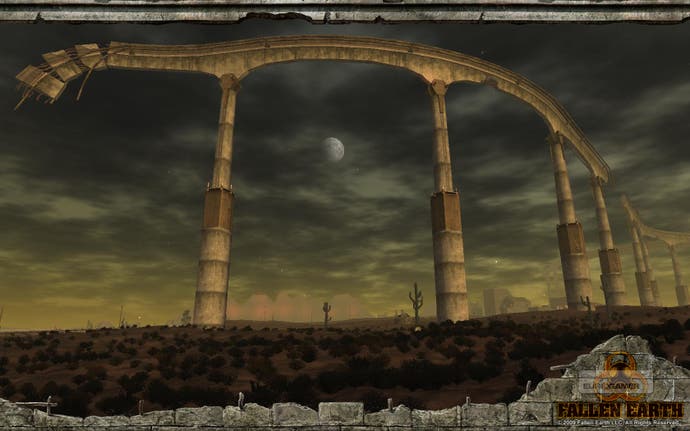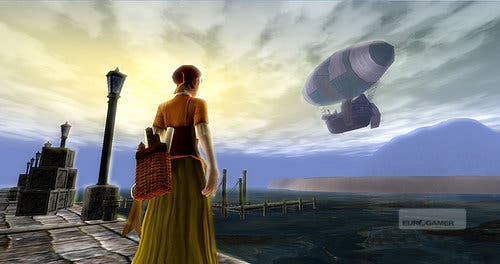MMOs' wild frontier
Think it takes a publishing sugar-daddy and big budget to make an MMO? Think again.
Fallen Earth
Fallen Earth is a company so single-minded that it named itself after the game it's creating. Once again, we're in post-apocalyptic wasteland territory, although this time in the nearer future (150 years away) with a very clear sense of space - the Grand Canyon, reproduced to scale.
100 years after a plague has ravaged the earth, politically and ideologically opposed factions are warring over the Canyon's uranium. All player characters are clones, which explains their ability to resurrect in this markedly more realistic setting than most MMOs'. After "birth" in the Hoover dam, the last bastion of civilisation, the tutorial will then take new characters through the basics of Fallen Earth's free, FPS-style combat, which balances reactions and accuracy with RPG number-crunching.
Once again, advancement is classless and skill-based, and though there are levels they're less important than in most RPGs. You get a couple of advancement points to spend every tenth of a level, though there are other sources. As well as skills themselves, you'll spend them on attributes: first aid, athletics, group tactics and social (bartering) skills, for example. Mutations explain away the "magic": telekenesis, telepathy, nano technology and the plague.

Deep research-tree crafting, trade economy, vehicles and factional warfare in a scrappy, hardscrabble Mad Max world is the name of Fallen Earth's game. You can earn experience from crafting alone, and vehicles will be the big money- and time-sink. But going by the ATV we saw in our demo, they'll struggle to appeal in handling practice as much as in theory, which might be a problem when it takes a month to make a car.
Fallen Earth's hearty bleakness, semi-realistic setting, open exploration and clever factional setup (nature versus technology, order versus anarchy, faith versus commerce) are a great draw amongst the much more generic worlds, sci-fi or otherwise, that beset MMOs. But once again, the execution is lacking - stilted animation, unconvincing combat and erratic AI were the first and most glaring issues. Aiming once again for release this year, Fallen Earth has a long hard road ahead of it.
Gatheryn
I was starting to get the sense that these loners' games were all pursuing interesting ideas down niche-interest cul-de-sacs, and that none of them possessed the presentational skills to bring those ideas back out into the light. Gatheryn didn't reassure. Supposedly aimed at a casual audience, here was a proposition so bizarre it seemed to appeal to its makers and no-one else.

Developer MindFuse brings together talent from both ends of the gaming spectrum - LucasArts and Shockwave Flash games. If only they could be said to meet in the middle. Gatheryn is a 3D social virtual world with a top-hats-and-zeppelins Victorian steampunk theme, overlaid with 2D puzzle-game diversions and persistent MMO character development. It doesn't, frankly, make any sense.
Planned for 2009 once more, Gatheryn looks even shakier than Earthrise and Fallen Earth, despite being much less ambitious (technically, at any rate). Its genteel township looks ten years out of date, and the gameplay seems to be drawn from every standard MMO element except the central one - combat - without any thought as to what would replace it. Resource gathering, questing and taking to NPCs are all present and correct but don't appear to have any meaningful design or purpose to them; crafting did, just about, involving a gem-matching mini-game just barely related to the task at hand.
With only 15 mini-games of this sort, plus a few even lighter micro-games, it's hard to see what MindFuse expect their players to do except shop for costumes, pets and housing trinkets with micro-transactions. Gatheryn is free-to-play, but you'll need to pay a subscription for the right to own property and aim towards the big collaborative goals - building an airship, for example.
Up against the likes of Sony Online's ruthlessly polished and broad-church Free Realms, Gatheryn seems like a curio at best, a misguided shot in the dark. The search for a promising indie MMO was starting to look like a wild goose chase.








